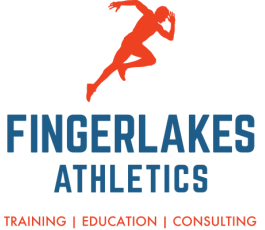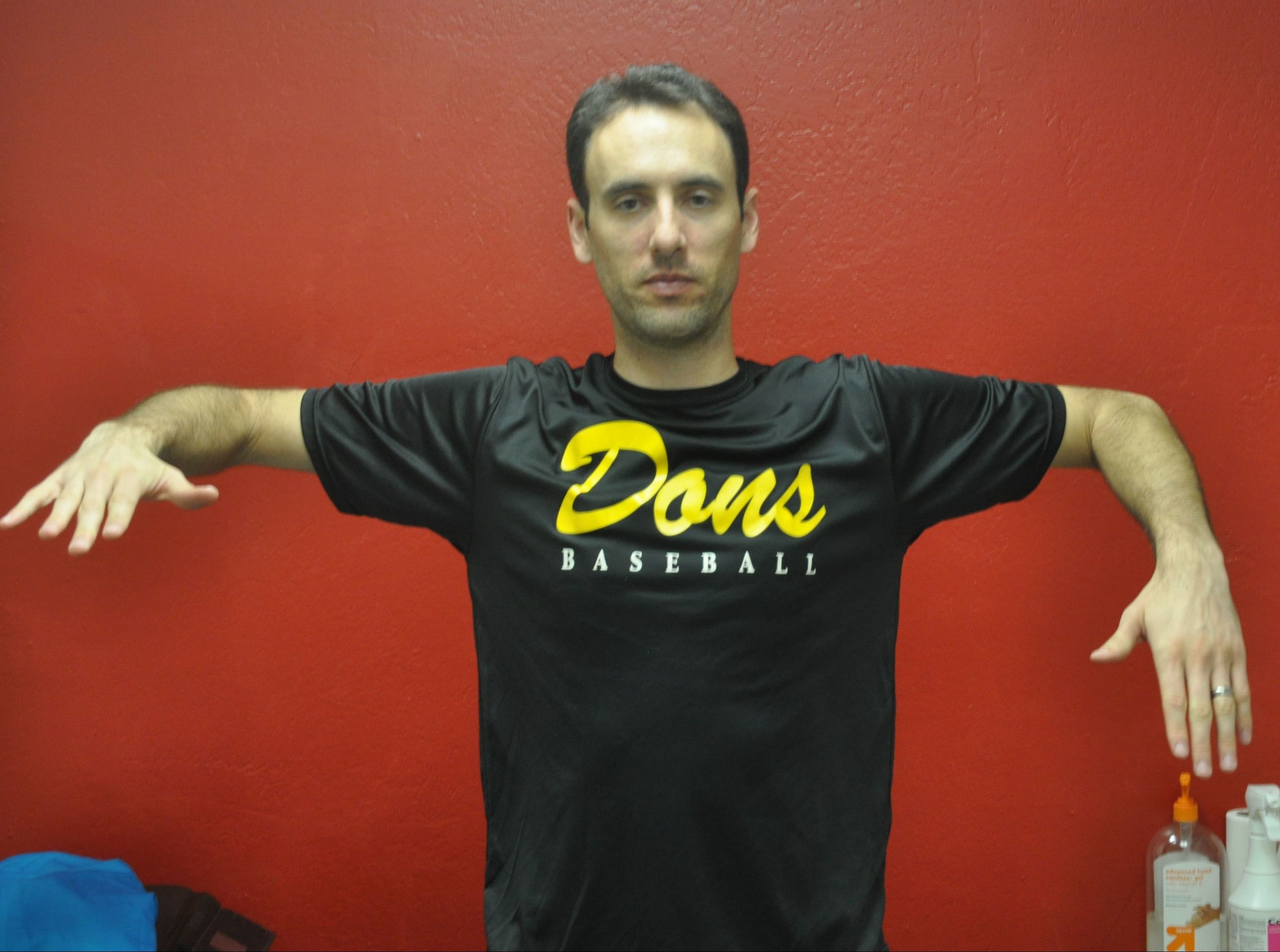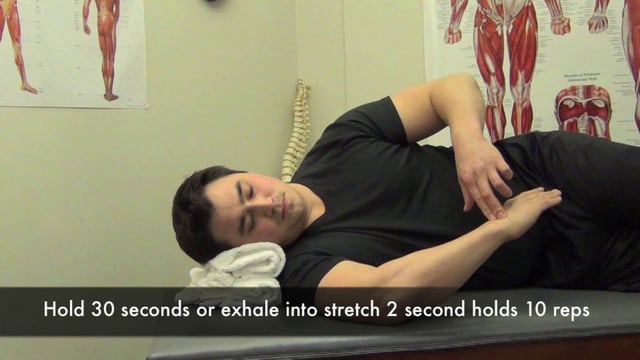|
If you coach overhead athletes you are undoubtedly aware of the commonality of the shoulder pain they can suffer as a result of their sport. Many of the visualized changes to the shoulder are a result of normal adaptation to exercise, but painful motion and restriction in sport are not. If your athletes are developing shoulder pain from an abnormal adaption that has limited their range of motion and internal rotation, commonly referred to as GIRD Glenohumeral Internal Rotation Deficit, then stretching may be part of the answer. As an athlete moves there arm overhead they shorten and strengthen the muscles on the back of their shoulder, this allows for greater range of motion in that direction. As a result of this change, the muscles that perform the opposite movements can become weaker and 'stretched out'. Looking at how your athletes move their shoulder can identify those that have diminished motion. Once a deficit is confirmed then the next step is working to correct it. A new study has evaluated the effectiveness of the sleeper stretch to treat diminished range of motion. Those athletes that performed the stretch daily for 8 weeks had improvement in shoulder motion compared to those that did nothing. When performing the stretch it is important to make sure that the shoulder blade stabilized, failure to do so will lead to the motion gained in the stretch coming from the shoulder blade and not the intended musculature. Of additional importance is the inclusion of shoulder strengthening exercises to both prevent this mal-adaption from training and to subsequently help restore strength and stability to a shoulder that is recovering from injury. Exercises that can help provide stability include rows, straight arm pulldowns, scapular punches and 45 degree shoulder raises. By keeping track of your athletes and how they move, you are able to put them in a strong position to both improve their performance and teach them skills and techniques to keep playing. Reference:
Chepeha, J. et. al. (2017). Effectiveness of a posterior stretching program on university level overhead athletes: A randomized controlled trial. Clinical Journal of Sports Medicine. http://journals.lww.com/cjsportsmed/Abstract/publishahead/Effectiveness_of_a_Posterior_Shoulder_Stretching.99478.aspx Photo credit: Google, http://peakformhealthcenter.com/preventing-injuries-baseball-pitcher/ https://i.vimeocdn.com/video/446393978_640.jpg
0 Comments
Leave a Reply. |
AuthorI write on sport management, fitness, sports medicine and business topics to help you reach your goals Archives
February 2024
Categories
All
|
|
Home
About Contact |
To learn more about what services we offer, to schedule an appointment or to get prices please contact me at
[email protected] (607)279-6791 *This site is for educational purposes only, it is not meant to diagnose, treat or replace medical advice. Before starting an exercise program always make sure that you are healthy and able to do so safely.* |




 RSS Feed
RSS Feed